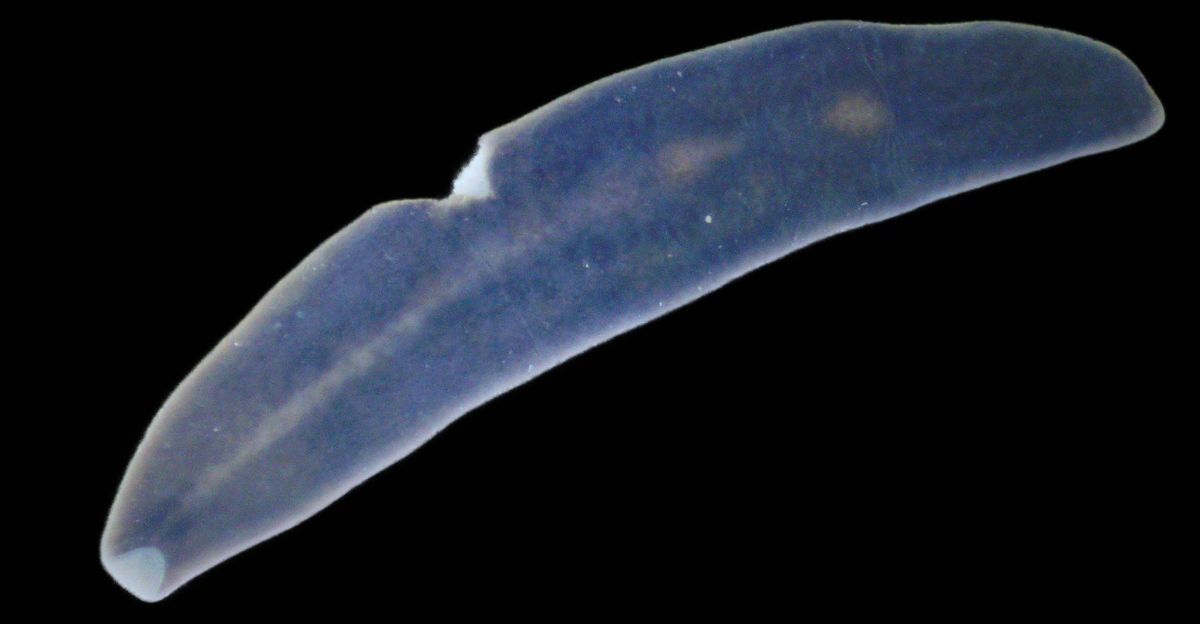
When staff at a commercial nursery in Kinston, North Carolina, spotted something unusual crawling through their potted plants, they knew they had to act fast. At first, no one knew what the species was. It was long, flat, and moved with a slick, gliding motion through the wet soil. The small creature seemed harmless.
Not knowing what it was, the nursery sent it to North Carolina State University, hoping researchers could identify its species. Everyone waited in anticipation. What was this creature? Why had it suddenly appeared? The answers remained elusive, and over time, more and more of these strange species appeared.
They Drew Attention

The flatworms’ resilience quickly drew attention. Homeowners and nursery staff found them hiding under rocks, logs, and inside plant soil. Despite multiple attempts to get rid of them, the creatures kept coming back, undeterred by pesticides and physical removal.
This suggested an unusual survival mechanism that had experts scratching their heads. Local scientists began detailed studies to understand the biology and potential ecological impact of this persistent organism. But what species was it really?
Unique Traits

Early investigations tried to identify the species and its origin. However, the flatworms’ unique traits did not match any commonly known local species. Samples were quickly collected and sent to North Caroline State University for further examination.
As soon as the university received the samples, researchers used molecular techniques and microscopic studies to identify the flatworms, hoping to determine whether the species was native or introduced. Early results suggested a surprising newcomer to the region’s ecosystem.
A Remarkable Ability

One of the species more fascinating traits was its remarkable ability to regenerate itself. Researchers quickly found that when injured or sliced in half, the flatworms would regrow missing body parts, even forming a completely new worm from a single fragment.
This seemingly “unkillable” trait made controlling their population even more difficult. Ecologists warned that these regeneration capabilities could lead to the flatworms spreading rapidly and disrupting native species, prompting urgent research into management strategies.
Amaga Pseudobama

Initially, scientists suspected the flatworm might be Obama nungara, a known invasive species that has spread widely throughout Europe. However, they finally identified it as a previously unknown invasive flatworm species named Amaga pseudobama. Native to South America, this species had never been recorded in North Carolina until now.
The discovery of this flatworm instantly sparked concern because of the threat it poses to native wildlife, soil health, and local agriculture. Its ability to rapidly reproduce and regenerate made it a particularly dangerous invasive species that had to be dealt with immediately.
Concerns About It Spreading

Invasive flatworm species, like Amaga pseudobama, often disrupt local ecosystems because they prey on native soil invertebrates, such as earthworms, which play very important roles in soil aeration and nutrient cycling. The introduction of Amaga pseudobama threatens to destabilize these ecological functions.
Scientists are concerned that if it is not controlled early on, the flatworm could invade natural ecosystems, which would pose a serious risk of long-term harm to the region’s biodiversity.
Prevention

In an effort to control Amaga pseudobama, authorities are monitoring affected areas and educating the public about prevention. Experts advise the public to carefully inspect and clean nursery plants before moving them to new locations.
Quarantine measures have been proposed to limit the flatworm’s spread. For now, chemical control remains a challenge because of the worm’s ability to regenerate, which is why researchers are also investigating biological and physical control methods. Early detection is very important for managing this invasive species effectively.
Public Awareness

At the moment, public awareness campaigns are being set up to inform gardeners, landscapers, and plant nurseries about this invasive species. Identification guides and reporting procedures are being shared to help people quickly and accurately report any sightings.
Researchers have emphasized that community involvement is extremely important in tracking invasive flatworms’ spread and assisting in containment efforts. Cooperation between environmental agencies and local residents is essential to reducing the potential ecological impact of this invasive species.
Studying The Species

Scientists are still studying the species’s biology in an effort to understand how it adapts so well to new environments. Ongoing genetic sequencing is comparing it to related species in hopes of identifying weaknesses that could be used in control efforts.
Long-term ecological studies will also help assess the worm’s impact on soil health and native invertebrate populations. Funding and support for these studies are very important as the species’s population spreads.
The Challenges

The discovery of this invasive species is a powerful reminder of the challenges invasive species pose across the world. Its regenerative ability and adaptability require immediate scientific attention and coordinated management.
Preventing this flatworm’s spread is important to protect North Carolina and other states’ ecosystems and agricultural industries. A combination of ongoing scientific research, public education, and vigilant monitoring is needed to combat this persistent invader and prevent it from spreading in the region.
Explore more of our trending stories and hit Follow to keep them coming to your feed!

Don’t miss out on more stories like this! Hit the Follow button at the top of this article to stay updated with the latest news. Share your thoughts in the comments—we’d love to hear from you!







